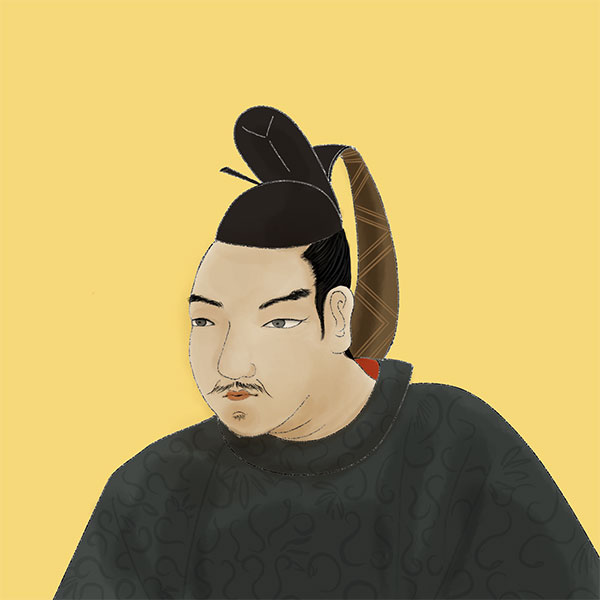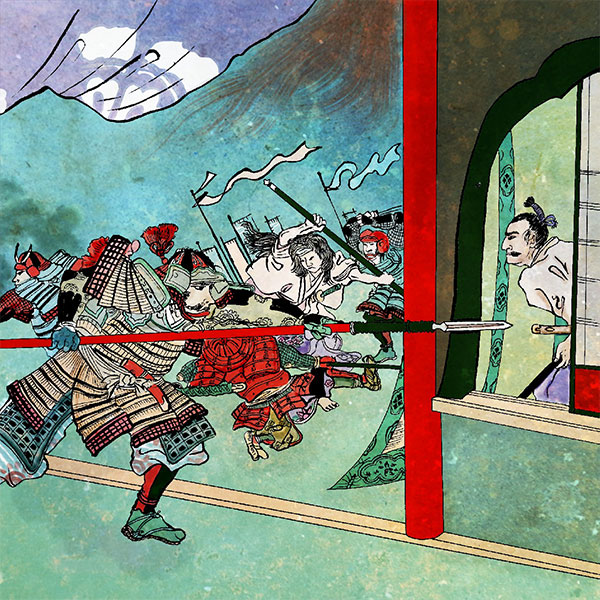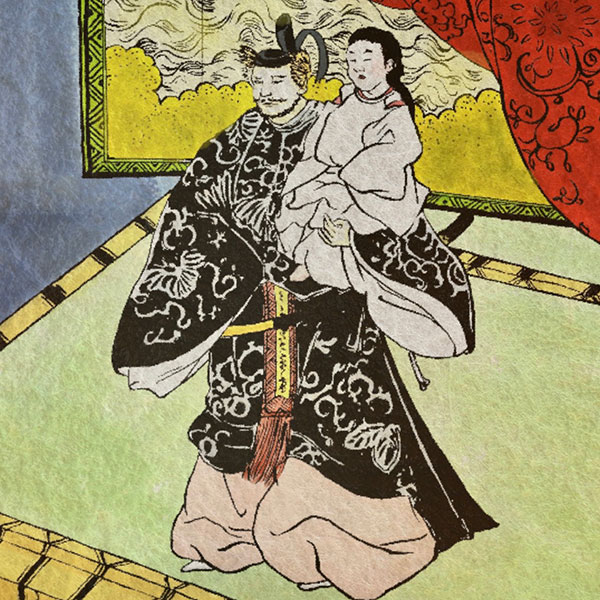Sanboshi (Hidenobu Oda) (2/2)Nobunaga's grandson

Sanboshi (Hidenobu Oda)
- Article category
- biography
- name
- Sanboshi (Oda Hidenobu) (1580-1605)
- place of birth
- Gifu Prefecture
- Related castles, temples and shrines

Gifu Castle

Kiyosu Castle

Azuchi Castle
- related incident
There remains a written instruction issued in the intercalary third month of the fourth year of the Keicho era (1599) to Takikawa Shuzen, a vassal of Gifu, to strengthen the defenses of Inabayama and the town entrance following the retirement of Ishida Mitsunari from his position as magistrate and his confinement to Sawayama Castle.
In 1600, he met with Jesuit missionaries and had an audience with Toyotomi Hideyori, who bestowed upon him 200 gold coins and 2,000 to 3,000 koku of military sacks. He was originally scheduled to join Tokugawa Ieyasu's invasion of Aizu on July 1, but his departure was delayed due to time spent preparing his military uniform.
During this time, he was approached by Ishida Mitsunari, who offered to give him the provinces of Mino and Owari if he were victorious, and joined the Western Army.
His name appears in Mitsunari's letter dated August 5th, "Book of Preparations," as one of the generals at the Minoguchi. When Hidenobu joined the Western Army, most of the forces in Mino followed him. During this time, there is a legend that he negotiated with Mitsunari at the request of his vassals, including Kizukuzaemon, Tsuda Tozaburo, Kamigata Yasaemon, and Kamigata Tozo, who were Ikko sect followers, and helped Honganji Kyonyo return to Kyoto.
With reinforcements from Mitsunari led by Kashiwagi Hikoemon and Kawase Saemonsuke, on August 22, 1600, at Komeno along the Kiso River, they deployed 2,500 cavalry led by senior vassal Dodo Tsunaie and chief clerk Iinuma Nagasuke as the vanguard, 1,000 soldiers led by Kizukuri Nagamasa in Nakano village, and 1,000 soldiers led by Sato Masamasa in Shinkano village as a reserve force, and used the Kiso River as a defensive line to meet the eastern army led by Ikeda Terumasa and Fukushima Masanori (Battle of Komeno).
The total number of troops is said to be 6,530. Hidenobu himself led 1,700 troops to Enma-do in Kamikawate Village and took overall command. Regarding this battle, there are still documents that remain, including prohibitions issued to Yokyo-ji, Zenpuku-ji, and Mandara-ji temples, and documents issued by Hidenobu's elder retainers to local samurai when they were lining up at Enma-do.
Although Iinuma Nagasuke (Kokanpei) killed the Ichiyanagi family elder, Otsuka Gondayū, and delivered his head to Hidenobu at Enma-do, they were defeated due to the difference in military strength.
In addition to Nagasuke, Tominaga Katsuyoshi and others were killed in this battle. In the evening of the same day, Takegahana Castle, defended by Sugiura Shigekatsu, also fell, and Shigekatsu was killed in battle (Battle of Takegahana Castle).
Cornered, Hidenobu requested reinforcements from Ogaki Castle and Inuyama Castle on the night of the 22nd, while he barricaded himself in Gifu Castle. The generals were deployed as follows: Hidenobu and his brother Hidenori in the main citadel, Matsuda Shigeo, Mitsunari's reinforcement officer, at Inabayama and Gongenyama Forts, Kawase Samanosuke, also a reinforcement officer, at Zuiryujiyama Fort, Tsuda Tozaburo at the main gate, Mokuzukuri Nagamasa and his son at Nanamagari, Momo no Tsunaie at the palace and Hyakumagari, and Muto Sukejuro at the water gate.
Initially, it was decided that Shimazu Uma no Kami would send reinforcements, but this was cancelled. The siege continued all day on the 23rd, but the troop strength had been drastically reduced in the previous day's battle, and since Ikeda Terumasa, the former lord of Gifu Castle who belonged to the Eastern Army, was well aware of the castle's structure, the defeat was insurmountable, and Hidenobu attempted to commit suicide together with Hidenori, but was persuaded by Terumasa to surrender and open the castle on the 23rd.
During the siege, a fierce gun battle took place at the Kamikoshi Gate, and during the battle at the Ninomaru Gate, it is said that a gunpowder storehouse inside the gate caught fire, causing an explosion and blaze.
Battles also took place at Musashi Fort and the Honmaru Shichiken Yagura. Though outnumbered, the castle's forces, including Oda Hidenori, Oda Hyobu, Saito Tokumoto, Kizukuri Nagamasa, Momo Tsunaie, Kajikawa Takamori, Muto Sukejuro (Toki clan), Irie Sakon, Iinuma Nagazane, Adachi Nakanosuke, Yamada Matazaemon, Takigawa Jihei (possibly Hijikata Jihei), Wada Magodayu, Tsuda Touemon, Tono Sahyoe, Date Heiemon, and Ooka Samanosuke, fought bravely and held off the invaders. Many of the samurai generals were killed in battle, including Iinuma Nagazane and Wada Magodayu, both of whom fought bravely.
The Butoku Anminki records in the entry for August 28th that Fukushima Masanori's forces took 430 heads, Ikeda Terumasa's forces 490, and Asano Yukinaga's forces 308. It is said that the last surviving retainers at the time of the fall of the castle committed seppuku, and the fierceness of the battle can be seen in the "blood ceiling" at Sofukuji Temple, where the floorboards from the place where 38 of Hidenobu's retainers committed seppuku are laid on the ceiling. The heads of Hidenobu's retainers killed in the battle for Gifu Castle were sent to Edo, and after inspecting the heads, Zojoji Genyo and Gyokuzoin Tadayoshi built a grave in Azabuhara at the command of Ieyasu to hold a memorial service for them, but the grave has not yet been found. During this battle, the priest's house that Hidenobu had built under Gifu Castle was also burned down.
After leaving the castle, Hidenobu shaved his head at Josenbo in Kami-Kano and moved to the Ikoma residence in Owari Koori, the hometown of his paternal grandmother, and was then sent to Chita, Owari, which was the territory of the Ikoma family and where his paternal aunt, Tokuhime, also stayed for a time.
Although there were some voices questioning whether Hidenobu's life should be spared after he had surrendered, Fukushima Masanori, who had many relatives among his retainers, insisted on sparing his life in exchange for his own military achievements, and after the battle ended, his 130,000 koku domain in Mino (Gifu) was confiscated and he was sent to Mount Koya.
The Asano clan served as guards along the way. Many of Hidenobu's retainers who survived the battle for Gifu Castle were invited to serve under the Fukushima, Ikeda, and Asano clans, who also fought in the battle.
Expulsion from Mount Koya and the end of Hidenobu
After his removal from the ranks, Hidenobu decided to train at Mount Koya, but due to the siege of Mount Koya led by his grandfather, Nobunaga, he was initially not allowed to enter the mountain and was forced to wait until October 28th.
Even after he was allowed to become a nun, he continued to be persecuted. During this time, he held a memorial service for his aunt, Sannomarudono, when she passed away in 1603.
On May 8, 1605, he left Mount Koya and went to live at the foot of the mountain.
One theory about his exile is that his descent from the mountain was due to his own reckless behavior, which included killing a monk, but Hidenobu himself never persecuted Buddhism.
There is also a theory that his banishment from Mount Koya was the result of his grandfather's attack on Mount Koya. He passed away on May 27th of the same year at Mukozo. From this, it is thought that he came down from the mountain to recuperate due to poor health, but it is also said that he committed suicide. The Mount Koya side considers May 8th, the day he came down from the mountain, to be the date of his death. He was 26 years old.
His memorial tablet is enshrined at Kannonji Temple in the same area. During the Taisho period, the Oda clan, who claim to be descendants of Hidenobu, erected a stone monument at his grave, with the head priest of Entokuji Temple writing about Hidenobu's achievements on the back. He also has a grave at Mount Koya, where the tomb of Toyotomi Hidetsugu is also located.
Reread the article on Sanboshi (Oda Hidenobu)
- related incident

- WriterTomoyo Hazuki(Writer)I have loved history and geography since my student days, and have enjoyed visiting historical sites, temples and shrines, and researching ancient documents. He is especially strong in medieval Japanese history and European history in world history, and has read a wide range of things, including primary sources and historical entertainment novels. There are so many favorite military commanders and castles that I can't name them, but I especially like Hisashi Matsunaga and Mitsuhide Akechi, and when it comes to castles, I like Hikone Castle and Fushimi Castle. Once you start talking about the lives of warlords and the history of castles, there's a side of you that can't stop talking about them.








